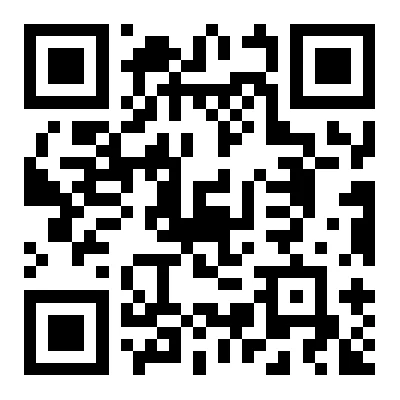Method for brew congou tea
Gongfu tea is unique. If brew tea doesn't have kung fu, it can't be called Gongfu tea. Therefore, the credit for congou tea is all in brew tea, the method of making tea. If you want to drink congou, you must first have a set of qualified tea sets. Teapots (Chaozhou people call them "cans") are made of pottery, and purple sand is the best. The pot is flat and drum-shaped, with a long mouth and a long handle, which is very quaint. There are two cups, three cups and four cups of pots. The teapot is the best when the pot is turned upside down on the table, with its mouth, mouth and handle evenly touching the ground and its center in a straight line.
If the best person is placed in the water, it will be stable and not heavy. Exquisite and chic, white as jade, the small teacup is only 5 cm in diameter and 2 cm in height, which is divided into two types: cold and summer. The mouth of the cold cup is slightly closed, so it is insulated, and the mouth of the summer cup is slightly overturned, which is easy to dissipate heat. The tea tray for holding cups and pots is called "tea boat", and the concave cover has leakage holes, which can store about half a liter of waste tea. The whole tea set itself is a handicraft. Teacups and tea boats are painted in glaze or underglaze. Teapots are the most expensive. An ancient and precious teapot is an antique that can be appreciated. Some of them are inlaid with a beautifully carved pattern of silver or gold, which has become a rare heirloom. The tea rust in the teapot can't be washed away, and the more it is, the more precious it is, which can ensure the charm of tea. The specific method of making tea is as follows:
First, the treatment of the device includes six actions: starting a fire, pulling out the fire, fanning the furnace, cleaning the device, waiting for water, and showering the cup. Just like the "Tai Chi Rise" in Tai Ji Chuan, it is a preparatory stage. Needless to say, the first four things, this "waiting for water" and "pouring cups" are all initial attempts. About ten minutes after the fire, there will be a whizzing sound in the sand. When its sound suddenly becomes small, it means that the fish-eye water will become. You should immediately lift the sand, pour it into the jar and cup, and then put it on the stove. That's when the second thing started.
Second: take tea, open the tea, pour it on a piece of white paper, measure the thickness separately, put the coarsest one at the bottom of the pot and the dripper, then put the fine one in the middle layer, and then put the coarse leaves on it, and the kung fu of taking tea is completed. Therefore, it is necessary to do this, because the fine powder is the strongest, and it is easy to get bitter when there are more tea leaves, and it is also easy to plug the dripper. If the thickness is put away separately, the tea can be made evenly and the tea taste can be gradually exerted. Tea, each tea, is based on the teapot, and it is enough to put 70% tea in it. If it is too much, not only the Chata brewed is strong and bitter, but also the good tea leaves are mostly tender buds and tightly rolled. After soaking in boiling water, they stretch out and become very big, and even the water can't be washed in. But too little won't do. It's tasteless. Taking tea is the first step in making congou. The gods change, so they rise.
Third: Waiting for the soup Su Dongpo's poem: "The crab's eyes have passed the fish's eyes", which means that it is best to make tea with this boiling water. "Tea Theory" says: "The soup is the life of tea. Seeing that it is boiling like a fish's eye, it is slightly audible, which is for three boiling. The edge of the stirrup is like a bead, which is the second boiling. Make waves and drum waves for three boiling points. A boiling is too childish, which is called a baby boiling; Three boiling is too old, which is called Baishou soup; If beads float on the surface of the water and the sound is loose, it is just the right time. "Daguan Tea Theory" also says: "Every soup is based on the fish's eyes and crabs' eyes."
Fourth: when the water boils, you can make tea with americium. The place where the stove and teapot are placed takes about seven steps. Take seven steps after lifting the pot, uncover the lid of the teapot, and rush the boiling soup around the pot mouth and the edge of the pot, and avoid going straight to the pot center (if you use the lid, rush to a corner, and then rush to the corners, you can also avoid going straight to the pot center). The so-called "high impact and low sprinkling" is also true. The high impact makes the boiling water strongly impact the tea leaves, so that the fragrance of the tea volatilizes faster, and the tea essence volatilizes quickly, but the tannin is too late to dissolve, so the tea leaves will not be astringent. As for taking seven steps before washing, the purpose is to boil water a little cooler so as not to destroy vitamin C.
Fifth: the foam scraping and flushing must be full, whether the teapot is "three mountains together" and how the water level is. At this time, it depends on the effect. After the teapot is full of water, the tea foam floats and never overflows (it is another matter to overflow the surface of the pot if it is flushed too much). Lift the lid of the pot, gently scrape the tea foam from the spout, and then cover it.
Sixth: cover the pot cover, and then pour boiling water on the pot. It's called pouring cans. The drenching pot has a function: first, it makes the hot air attack inside and outside, forcing the tea essence to evaporate quickly and adding hot air; The second is to stop for a while, and the water in the tank is completely dry, that is, the tea is cooked; The third is to wash away the tea foam outside the pot.
Seventh: Making a hot cup is said to be "burning a hot pot" in Chaozhou dialect, which is the key point of kung fu in making congou. There is a tea expert who travels all over the world, summing up the experience of drinking tea everywhere. After drinking congou, he said that congou is characterized by the word "hot". From cooking soup to drinking tea together, you can't do without this word, which can be said to have three flavors. To iron the cup, after pouring the can, pour the cup with boiling water. Pay attention when pouring the cup, and the boiling water should go straight to the center of the cup. After ironing the cup, add cold water to the sand pan, put it back on the stove, and turn around to "wash the cup". Washing cups is the most artistic form of action. An old hand can wash two cups at the same time, with quick action, sonorous tone and wonderful posture. A foreign friend, who is also a tea fan, has heard the name of congou for a long time. Not far from Wan Li, he tried his best to drink kung fu once in China. When he saw the action of washing the teacups, he couldn't help admiring it again and again, saying that it was better than the acrobatic troupe's kung fu. Indeed, people who can't listen to the cup will burn themselves to death as soon as they touch it. It is a blessing not to break the cup, not to mention "beautiful posture". After washing the cup, pour the water in the cup and plate into the tea washing. At this time, the water outside the teapot is just evaporated, which is when the tea is ripe. An old hand here, not bad at all, can sprinkle tea to respect guests.
Eighth: Sprinkle tea for several times, and the last hand is to sprinkle tea. There are also four words for sprinkling tea: low, fast, even and exhausted. "Low" is the "low" of "rushing high and pouring low" as mentioned earlier. You must not sprinkle tea too high. If it is high, the fragrance will be lost and the foam will be everywhere, which is extremely disrespectful to the guests. "Fast" is also to keep the fragrance from losing and keep the heat of tea. "Evenness" means that when sprinkling tea, it must be like the rotation of a wheel. The cups should be sprinkled evenly in turn, and only one cup can be sprinkled, because the tea is excellent and light at the beginning, and then comes out with a strong color. The word "even" is important. "Do" means don't let the remaining water stay in the pot. Leave a little for the first flush (the first flush is usually used to directly pour out the undrinkable or clean the teacup), and the second and third flushes must be done. After sprinkling, you can turn the teapot upside down and put it on the heavy mat, so that the water in the teapot can drip out completely. This is because as long as there is no water, tannins cannot be dissolved and tea will not be bitter.





